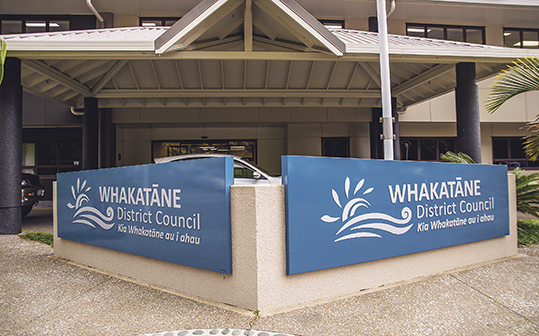Council ploughs ahead

News Editor
Tough times mean we all have to cut back on spending, but not so for the district council, says Whakatāne Action Group chairman John Howard.
After months of work by staff and councillors, Monday marked the adoption of the long-term plan, at least for another three years or until the annual plan next year.
Audit NZ’s comments were clear, and their summation hit the nail on the head for some of council’s expectations.
They made the point that the council was spending beyond its means.
By the closing, round-the-table comments of the councillors, Audit NZ’s comments appear to have gone straight over their heads.

The WDC Titanic will sail on no matter what recession or hardship for ratepayers lies ahead.
Council debt that stood at $26.7 million in 2010 increased by just $5m a year through to $87m in 2022. From 2023 through to 2027, council debt will rise to $239.3m, increasing at $30.5m a year.
Referring to ratepayers’ ability to pay increasing rates, Mayor Victor Luca comments, “this may be the straw that breaks the camel’s back”.
Mayor Luca, Councillor Andrew Iles and Councillor Gavin Dennis spoke against the long-term plan as it stands and received applause from members of the public who were present (mostly Whakatāne Action Group members).
When it came to the voting, only Mayor Luca and Councillor Dennis stayed loyal to vote against the adoption.
Mayor Luca also stated that his conscience did not allow him to support the LTP in its current form and the resulting rate rise.
Yet, to make rates appear more affordable, they have lowered the UAGC’s (uniform annual general charges) and this has only shifted more rating on to the higher-value assets.
During the long-term-plan submission process, Whakatāne Action Group pushed for a less than 10 percent increase in rates.
We felt this was achievable by reducing the excessive spending on projects that were “nice to have” but not a necessity in this time of belt tightening and cost cutting.
The council has now ploughed on with adding more debt, which then increases the debt servicing and therefore increases rates.
The Whakatāne Action Group was taken to task that we were quoting a 38.6 percent rate increase over the next three years and told it was not factual, when it was in fact written in the draft plan.
Now, it’s in this final plan and will be around 41 percent, depending on adjustments they make in the next two annual plans.
We’ve all had to cut back and make changes to budgets, lifestyle and goals in these times, yet council has not slashed projects, has made no effort to reduce staff and as Cr Dennis said, “staff have not cut back”.
Whakatāne Action Group was set up, in haste, to raise awareness of what Whakatāne District Council and Bay of Plenty Regional Council Long Term Plan expenditure was being set at.
We were trying to motivate people to influence councils to rein in their spending.
With a record number of submissions, I would say that considering where and when we started that, yes, we made a positive difference to democracy and community involvement.
Our members also provided a lot of commentary in the Beacon.
But did we indeed make a difference and were we listened to?
Even Audit NZ pointed out two examples that the WDC could improve on, but still the WDC ploughs on. Result, everyone paying substantially more rates.
If you feel much as we do, we welcome you along to any of our meetings and to join our membership. Don’t leave it to someone else to do.
There is power in numbers, so come along and share your thoughts.
We can be contacted on our Whakatāne Action Group Facebook page or email us at [email protected]